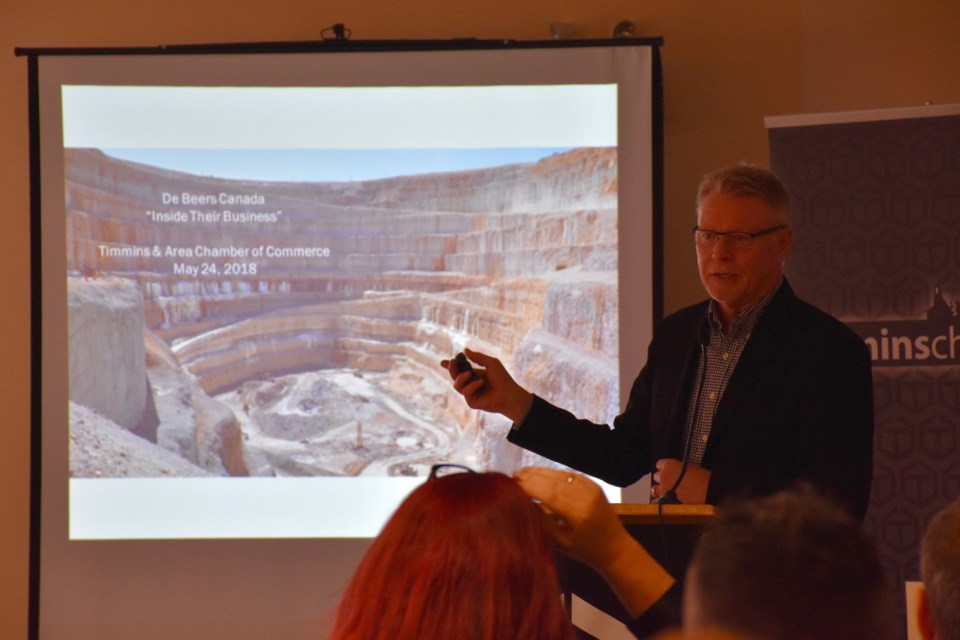As De Beers gets ready for the end of production at the Victor Mine, the company is working on the legacy it’s leaving behind.
“We’ve been proud of the way this mine has operated…we know our legacy will be built upon that closure. We have to leave the right closure for that mine and that’s what people will judge us on,” said Tom Ormsby, De Beers Canada's head of external and corporate affairs.
Ormsby and Alistair Skinner, the manager of operations at Victor Mine, were the featured speakers at the Inside Their Business event hosted by the Timmins Chamber of Commerce on May 24.
The diamond mine, located near Attawapiskat, opened in 2008 and is celebrating its 10th anniversary on July 26.
Production at the site is expected to end in February 2019.
“That’s when production ends and that’s when the formal part of the operation will then turn over to the team that will be responsible for the closure piece, which will include the demolition, the deconstruction of things, the removal of items from site,” said Ormsby.
Since announcing the closure late last year, the company has been working with employees on exit strategies. They've also been working with other mines for workforce availability.
Ormsby said there have been counsellors brought it to help people with how to write a résumé, as well as financial or family-type counselling.
The attrition rate has been higher than the company forecasted.
“We are using local contractors to fill those positions. So instead of having to get rid of permanent people towards the end of the life of the mine, we’ve actually got contractors that will just stop their contracts. In that way it’s actually helpful to us as well,” Skinner said.
Once the mining activity ceases, Skinner said they expect that it will be about a year to take everything apart.
For two years following that, there will be reclamation work, with the runway expected to be taken out around 2023.
After that, Skinner said access to the very small camp will be via a helicopter from Attawapiskat, although a lot of the monitoring can be done remotely.
“We’re hoping for not a lot of people on site. They would just come up to make sure that everything is still good,” he said, adding they use satellites to look at the land as well.
This is the fifth year that the company will be doing formal reclamation work at the site.
In the summers, they’ve worked with students from Attawapiskat for the process of planting trees.
“They collect most of the seeds for us in the summer and they bring them out to the site and then they also do the planting on site of the seeds,” said Skinner.
As they plan the more formal work, the company strives to get it right.
Ormsby said they’ve worked with Elders, for example, to make sure that any spots where there is processed kimberlite will be the right height so it doesn’t affect caribou migration.
“We know we’re going to leave some kind of a difference on the landscape because it’s impossible not to when you dig a hole in the ground. But what we have committed to, and what our permits expect us to do, and what everyone expects us to do, is to make sure that when we finish everything have we restored the land to its natural state?” he said.




